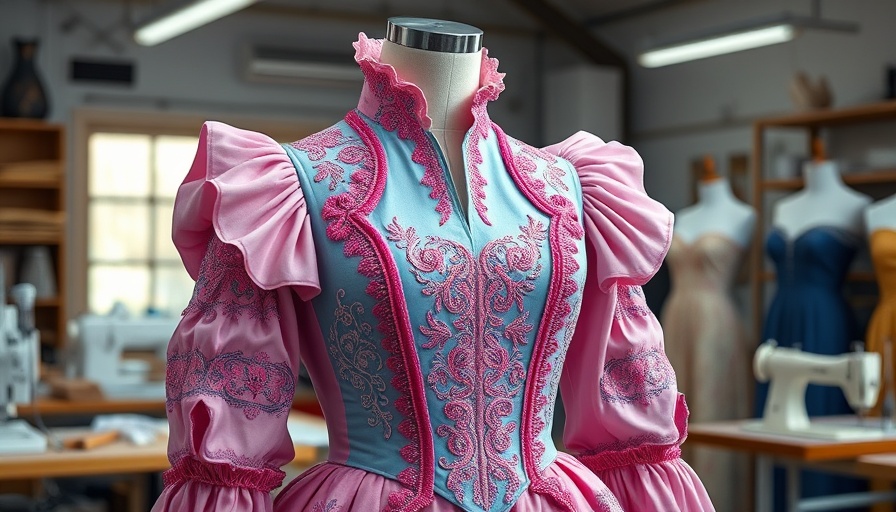
Exploring the Musical Magic of 'Dirty Rotten Scoundrels'
In the upcoming Stratford Festival 2025, an iconic moment from musical theater's rich history is set to make waves on stage. The piece ‘Dirty Rotten Scoundrels: "Dirty Rotten Number" from rehearsal to stage’ showcases the blend of humor and talent that has come to define this show. As we delve into this musical gem, it's a reminder of how art intertwines with individual experiences and societal commentary.
In 'Dirty Rotten Scoundrels: "Dirty Rotten Number" from rehearsal to stage', the discussion dives into the intricacies of musical theater, exploring key insights that sparked deeper analysis on our end.
Unpacking the Cultural Significance of Comedy
The world of musical theater often serves as a reflection of society, allowing audiences to laugh while grappling with deeper themes. In Dirty Rotten Scoundrels, laughter meets a commentary on greed and deceit, acted out by charming characters whose antics make us question our morals without losing our joy. The rehearsal insights shared in the video highlight how this production brilliantly balances humor with complexity.
The Journey from Rehearsal to Stage
The rehearsal process is a critical period where raw talent is shaped into the polished performance that audiences will soon enjoy. The video captures the emotional and practical dimensions of this journey, revealing the dedication involved. For cast and crew, each note and step in the choreography is not just about entertainment but about conveying emotions that resonate with the audience.
As they transition from rehearsals to performance, the energy shifts—what was once experimental becomes definitive, as the entire production aligns around a singular vision.
The Importance of Artistic Collaboration
In productions like this, you see the brilliance of collaboration. Cast members not only learn from one another but also contribute their unique perspectives to create something meaningful. The video showcases this collaborative spirit, reflecting on how the community of artists involved brings richness to the performance. It serves as a reminder that theater is a team effort, where every role—no matter how small—plays an important part in the larger narrative.
Audience's Emotional Journey with the Musical
For audiences experiencing Dirty Rotten Scoundrels, the journey is not merely about those on stage. It’s about connecting with the characters' trials and triumphs. The song "Dirty Rotten Number" resonates on a personal level, evoking laughter while raising questions about right and wrong. Such themes create a safe space for reflection, lauding the idea that it's acceptable to wrestle with discomfort in the name of entertainment.
Thoughts on Financial Troubles: An Underlying Theme
Among the playful banter and upbeat melodies, there shines an underlying message about financial struggles—a theme notably evidenced in the production's story. The vocal lament in the rehearsal depicting 'screwed for 50 grand' not only elicits humor but taps into the relatable crisis many face in the modern economy. This duality of comedy and serious commentary creates layers that audience members can dissect in their own experiences.
Conclusion: The Enduring Appeal of Musical Theater
Ultimately, the value of productions like Dirty Rotten Scoundrels lies in their ability to transcend time and connect with individuals—an essential experience that resonates far beyond the theater’s walls. As cast and crew prepare for their performances at the Stratford Festival 2025, we see not only a commitment to art but also an invitation for all of us to reflect on our human experience through laughter and song.
As you consider attending this spectacular event, let the themes of collaboration, personal struggle, and emotional resonance guide your reflection on what it means to be part of the audience. Engage with the performance, not just as a viewer, but as a participant in the story.
 Add Row
Add Row  Add
Add 




Write A Comment